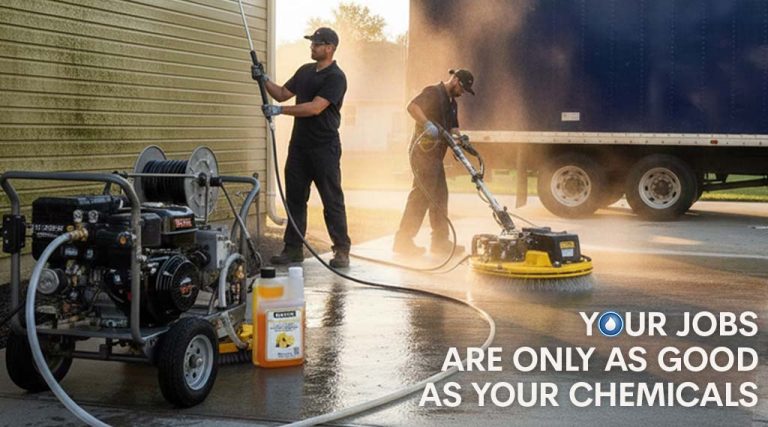- Home
- /
- PowerWash Industry
- /
- Protection of Cooking Equipment
Subscribe To Our Newsletter
Stay in the know on the latest products, deals, events, tips & tricks.
Social Media
Protection of Cooking Equipment
A VIEW FROM THE AHJ
The Protection of Cooking Equipment
R.T. Leicht
Fire Protection is more than merely “squirting wet stuff at hot stuff”! Any fire protection professional will acknowledge that fire protection, in its entirety, is a system. In commercial cooking operations, fire protection consists of four primary components; Prevention, Confinement, Detection, and Extinguishment.
Prevention is summarized into subparts: control of ignition sources and control of combustible materials. The human element plays a major role in the control of ignition sources. Restaurant management has to first commit to training employees in the proper operation of cooking equipment… to see that it’s not being operated at too high a temperature. Additionally, management has to commit to routine maintenance… needed to assure that defective equipment/ motors do not become the culprit of unwanted heat source. Since accumulations of renegade grease deposits is a common fuel source for kitchen fires, the best means of controlling combustible materials is a conscientious hood and duct cleaning program by competent individuals. The cleaning should extend to all areas where dangerous grease accumulations may be found, not just to the hood and duct areas.
Confinement of the unprevented fire in exhaust ducts is a topic that has been under a great deal of study lately. The original purpose of exhaust ducts was to vent excess heat and gases to the outside. This original intention didn’t take into account that there might be a fire in the duct. As restaurants in buildings of combustible construction burnt down at too high a rate in the 40’s and 50’s, it became apparent that combustible concealed spaces needed to be protected from the duct by separation at modest distances or enclosure in a fire rated chase or some other new technology.
Detection in its most efficient and reliable means is by a human being. Seeing, hearing, and smelling a fire is still the most used form. However, many times a means of detection is desired even when a human being is not present. A greater benefit of automatic detection is all the other automatic appurtenances. With automatic detection, employees and patrons can be alerted, fuel can be shut off, fire departments can be notified and extinguishing systems. can be activated. It is obvious why one does not want to have this feature impaired. So many other fire protection functions depend upon it.
Extinguishment comes in two varieties: manual and automatic. It can be as simple as placing a cover over a pan of flaming oil or turning off the heat. As a fire progresses, the use of the proper portable extinguisher by a properly trained individual provides an excellent first-aid option. Over the years, automatic extinguishing systems, regardless if carbon dioxide, dry chemical, or wet chemical, has been proven to be successful in fire control when properly maintained. In the event that an automatic extinguishing system is not successful, automatic sprinkler systems provide the best documented fire protection to a building and its contents. Additionally, they are considered relatively inexhaustible. However, not all buildings are sprinkler protected. In the unlikely event that all the components of the commercial cooking protection fails, we should always be able to rely on public fire departments to save the neighborhood by controlling the fire to the building of origin.
In conclusion, the fire protection system is like all other systems in that it is dynamic. And as such, each component of the system is required to be maintained and re-evaluated. Any disruption of any single part of the system can adversely affect the total product and overall goal of the system.
About the Author: R. T. Leicht is a fire protection engineer for the State Fire Marshal’s Office in Delaware. He is past president of the Delaware Valley Fire Marshal’s Association and sits on a number of committees for the Fire Marshals Association of North America. He also serves as the Deputy Fire Marshal in Springfield, PA and is involved with the NFPA on many levels including a principal on numerous Technical Committees.
This article appeared in the Third Quarter 1998 edition of “The Scratch Pad”
Share This Post
More To Explore
Winter Pressure Washing Maintenance Checklist
Winter Pressure Washing Maintenance Checklist Prepared for Contractors by PowerWash.com. Winter is the most important time of year to protect ...
2025 Tax Changes, New Rigs & Easy Payments: What Power Washing Pros Need to Know Before Dec 31
Updated for the latest federal guidelines. PowerWash.com does not provide tax advice. Always consult your CPA. As the year comes ...
Your Jobs Are Only as Good as Your Chemicals: Here Are the Ones That Stand Out
If your busy season has you running from job to job, you already know this: the equipment you use matters, ...
Stripping Wood the Smart Way (Not the Hard Way)
Deep Wood Restoration Made Simple with DSR-50 Whether you’re a professional deck and fence restoration contractor or a homeowner prepping ...




